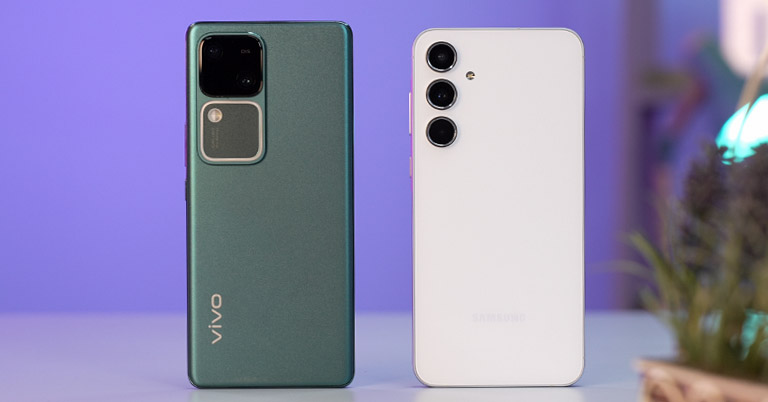
If you don’t know, the Vivo’s V series and Samsung’s A- series smartphones are quite popular mid-range smartphones in the offline market. Even though these are not the best performance-centric smartphones, the appeal here is their good-looking designs, great displays, and most importantly, good cameras! So, I thought, why not compare them and help you decide which one you should go between Vivo V30 vs Samsung Galaxy A55?
Before heading in let’s have a specs checkout between the Vivo V30 and Samsung Galaxy A55.
Vivo V30
Samsung Galaxy A55
Display
6.78-inches 120Hz AMOLED
6.6-inch 120Hz AMOLED
Properties
HDR10+, 2800 nits (peak)
HDR 10+, 1600nits peak brightness
Resolution
1.5K (2800 × 1260 pixels), 460 PPI
FHD+ (2340 x 1080 pixels)
Chipset
Snapdragon 7 Gen 3 5G (4nm)
Exynos 1480 5G (4nm)
OS
FuntouchOS 14 based on Android 14
OneUI 6.1 based on Android 14
Memory
12GB RAM, 256GB UFS 2.2 storage
8/12GB RAM, 256GB UFS 3.1 storage
Rear Camera
Front Camera
50MP, f/2.0
32MP, f/2.2
Security
Optical in-display fingerprint scanner, 2D Face Unlock
Optical in-display fingerprint scanner, 2D Face Unlock
Audio
Single speaker
Stereo speakers (Dolby Atmos)
Connectivity
5G, WiFi 6, Bluetooth 5.4
5G, WiFi 6, Bluetooth 5.3
Battery
5000mAh, 80W wired charging
5000mAh, 25W wired charging
Price in Nepal
NPR 60,999 (12/256GB)
NPR 62,999(8/256GB), NPR 67,999 (12/256GB)
Full specs of the Vivo V30
Full specs of the Samsung Galaxy A55
Vivo V30 vs Samsung Galaxy A55
Cameras

Daylight
So, let’s start with the cameras! And during the day, I found that both these phones can capture great-looking shots. There’s a healthy amount of detail in the photos and things like dynamic range are also well taken care of. But peeking a little closer, I noticed how both Samsung and Vivo have different kinds of optimization.
Samsung favors a more natural output while Vivo tends to brighten the output and lift the exposure, highlights, and shadows to make the pictures look more eye-catching. It’s like V30’s output is already edited!
I know most people prefer brighter-looking images — like the one from the Vivo V30 — but I’m more fond of what the Galaxy A55 captured instead. The way Vivo has lifted the shadow details all over the frame looks a bit too unnatural for my taste. While the same processing works in Vivo’s favor some other time.
Close-ups
Its photos also have punchier contrast and warmer colors compared to the Galaxy A55 even when I’m shooting in the “Natural” mode that’s supposed to look… natural. Although this kind of tuning is great for closeup subjects. If you look at these samples, Vivo’s closeup shots have great colors and focus while 6 out of 10 times, A55’s shots are washed out and out of focus.
So, in the primary camera, it’s really what you prefer, a natural-looking output or a processed image. Both cameras have their pros and cons, but nothing is that distinct to actually label one as better than the other!
Ultrawide
However, the Vivo V30 takes an easy win with its ultrawide shooter. That 50MP sensor captures more details compared to the Galaxy A55’s 12MP camera. And it’s not just about the resolution, A55’s ultra-wide sensor is not as optimized as well.
It has a relatively weaker dynamic range and the color shift from the primary to ultra-wide images is quite noticeable on the A55. Vivo’s output is also not perfect, it does tend to go overboard with the highlights sometimes, but 90% of the time, you will get well-detailed and balanced ultra-wide shots.
Lowlight
And things are pretty much the same in lowlight conditions too. The one thing I’ll tell you right away is that you’re actually better off without switching to the dedicated “Night Mode” option on either of them because the normal photo mode itself does a decent job of capturing the night scene.
Anyway, remember how the V30 preferred darker contrast and warmer colors during the day? Well… it turns out that sorta thing complements the nighttime photos brilliantly.
Again, the A55 has a more natural output with natural detailing, I am gravitating a little towards Vivo, its images are just so striking and well-exposed. There is some hint of over-sharpening in Vivo’s images, but it does not look bad, so I won’t complain!
Portraits
Even in portraits, the Galaxy A55 and the Vivo 30 are wildly different in this aspect! Samsung likes to make the subject’s face just a tad bit pinkish while Vivo’s portraits are more contrasty with a Yellow tone on the subject’s face that looks great.
It is quite difficult to choose actually, but I like the natural processing from Samsung a bit more. Having said that, I really wish the Galaxy A55 had a 2x option for taking portraits like Vivo.
Aura light on Vivo
Likewise, Vivo’s “Aura Light” is also a neat trick to take good-looking portraits at night, but I will admit, I don’t care so much about that.
Selfies
Unlike the portraits, in the selfies, the Vivo V30 has a pinkish tone this time while Samsung favors a yellowish tone, but both phones take great selfies. One advantage Vivo has is there’s an autofocus for selfies, which can come in handy if your hands are shaky.
Videos
Okay, What about videos? So you can shoot at up to 4K 30 fps from the primary, the ultrawide, and the selfie camera on the Galaxy A55, while the V30 can’t do 4K videos from its ultrawide lens yet. Which feels a little weird since that 50MP sensor has plenty of pixels to make room for 4K videos.
Either way, I’m gonna have to go with the Galaxy A55 in terms of videos. The Vivo V30 cranks up that exposure dials yet again — like it did with the photos — while I’m also a bit surprised to see how it struggles a little with stabilization. Its footage is noticeably jerky when walking around with the phone, whereas I’m not seeing any improvement even after switching to 1080 / 30 fps mode in the hopes of steadier recordings.
The only good thing I can think of with the V30’s videos is that the one from its selfie camera has a wider field of view. And its microphone quality isn’t too bad either.
Design and Build
So yeah, based on everything I’ve discussed so far, the Galaxy A55 and the Vivo V30 are pretty evenly matched phones in the battle of the cameras. And apart from that, these two are quite different in a lot of other aspects too.
Like, the design for instance. The Vivo V30 has this nice, curved finish on both sides and it feels absolutely incredible to hold. I would’ve liked to see some form of Gorilla Glass protection at the back and also maybe better ingress protection than IP54, but it’s not a total dealbreaker.
On the contrary, the Galaxy A55 goes the exact opposite way with flat edges all around a more robust IP67 dust/water resistance, and a Gorilla Glass Victus Plus protection for the display.
And you guys already know I’m a big fan of such modern-looking design but here, I’m really not fond of how sharp its edges are. I mean… it just makes holding the phone for long hours so unnecessarily uncomfortable.
Performance and software
And if you’re into mobile gaming, you’ll find that the Galaxy A55 has some catching up to do as well. Although its Exynos 1480 chip stands remarkably toe-to-toe against Snapdragon 7 Gen 3 and the Dimensity 8200 on the Vivo V30 and V30 Pro in different synthetic benchmarks but the Galaxy A55 simply hasn’t been optimized enough to play nice with most popular games.
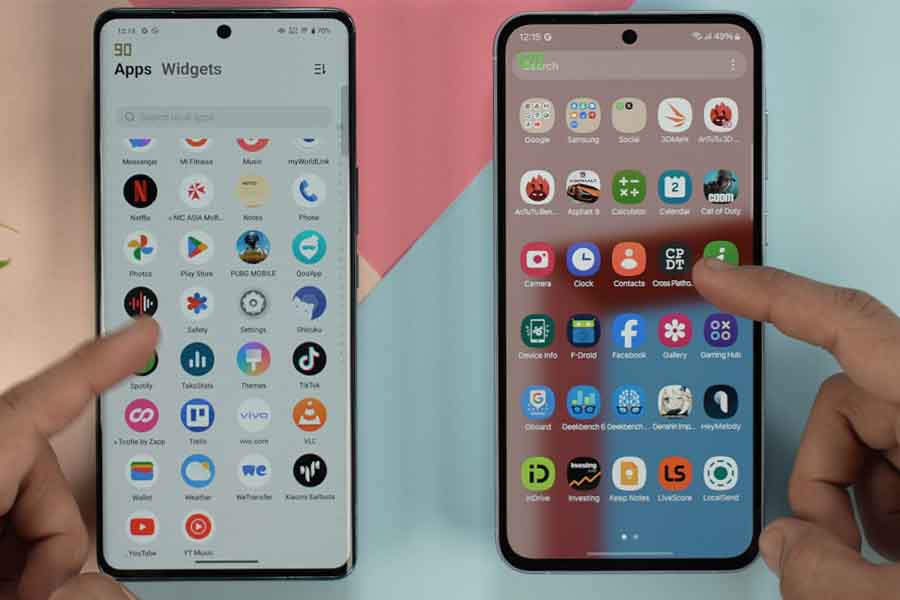
But let me reassure you that you won’t have any trouble with casual, everyday usage with either of them. In fact, the software experience on the Galaxy A55 is positively first-class. For me, Samsung’s One UI is way too far ahead in terms of things like stability, usability, customizability, and all that compared to something like Vivo’s not-so-fun Funtouch OS. Plus, the Galaxy A55 is also a clear winner when it comes to timely updates and longer software support as well.
Display
And you know… there’s just something about the display on a Samsung phone.
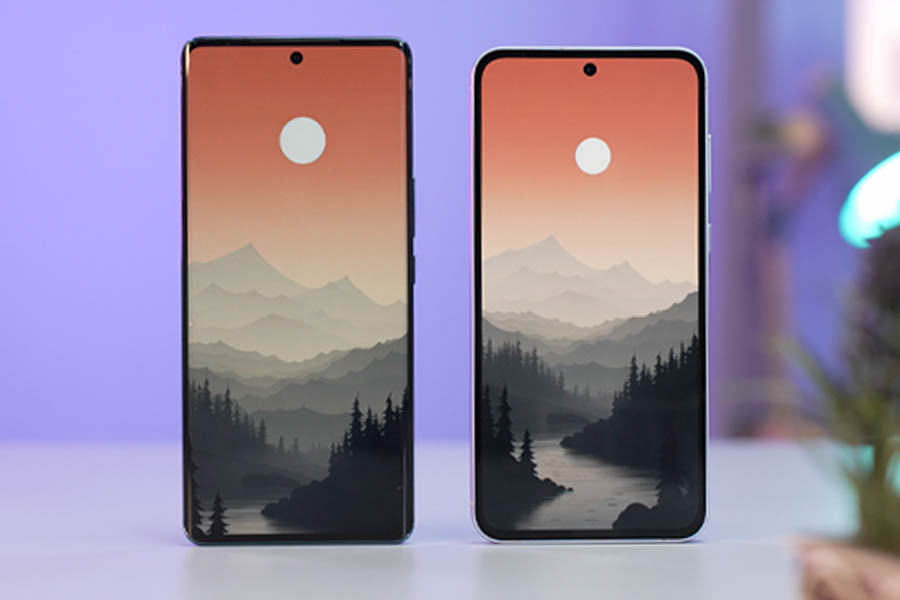
The V30’s screen isn’t bad by any means — it’s actually the brighter of the two — although the Galaxy A55 does color consistency, HDR processing, and those things better. Samsung has optimized the 120Hz refresh rate on this thing perfectly as well, while the V30 refuses to hit 120Hz even when setting it to high refresh rate mode for some reason.
Speaker and Haptics
Moreover, I like Samsung’s sharper, stronger haptics more and its stereo speakers are also more fuller and louder versus Vivo V30’s ridiculous single-speaker setup. I really don’t understand why Vivo’s V-series even in 2024 don’t have stereo speakers!
Battery and Charging
As for the battery life, I was getting roughly similar screen time from both of these phones. At around 7 hours on average, which is fantastic.

But Vivo V30 charges insanely faster here. Exactly twice as fast! Plus, you also get a compatible 80W charger inside the box itself with the V30, whereas the 25W charging speed is just not appealing on a premium midrange phone with Samsung.
Vivo V30 vs Samsung Galaxy A55: Conclusion
Alright, let me wrap things up now. So, if your budget is strictly under Rs. 61,000, with cameras as a priority — then I believe this year’s Vivo V30 is an incredible phone. Its videography aspect isn’t the best for the price and not having a stereo speaker is also a bummer, but overall, it’s a nice package!

The Galaxy A55, on the other hand, is also slightly expensive! Almost overpriced considering you can’t enjoy games here and you will also notice it to be slightly slower! But that premium Samsung is asking for you to pay is for No. 1 the brand value, and No. 2 the more refined software experience and the 4 years of updates you are going to get over the years.
Plus, you are also getting a better multimedia experience, nicer haptics, more natural camera images, and a much more robust IP67 rating and Gorilla Glass Victus protection. So, paying that premium for the A55 is not a terrible idea. But, if you play games, I suggest you just stay away from the A55.
















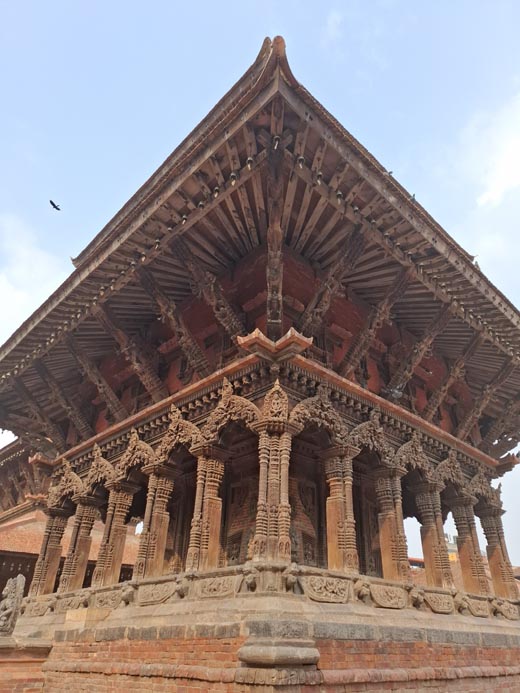



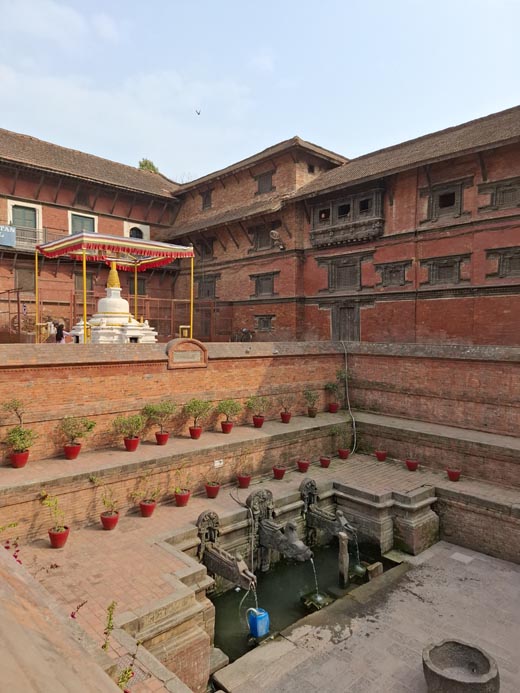















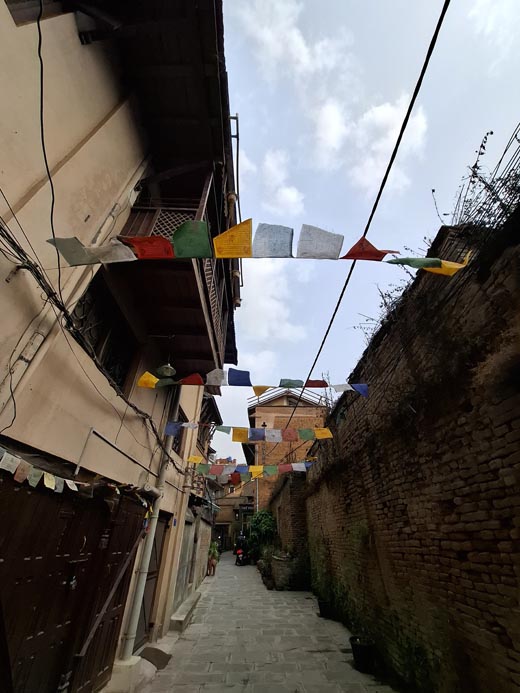

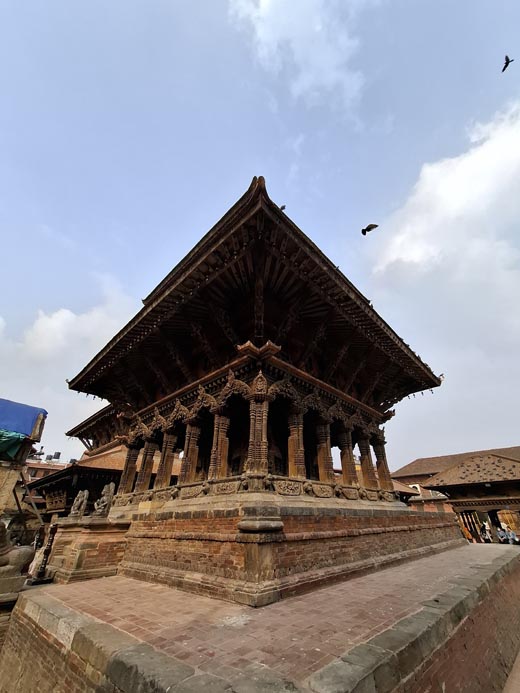

















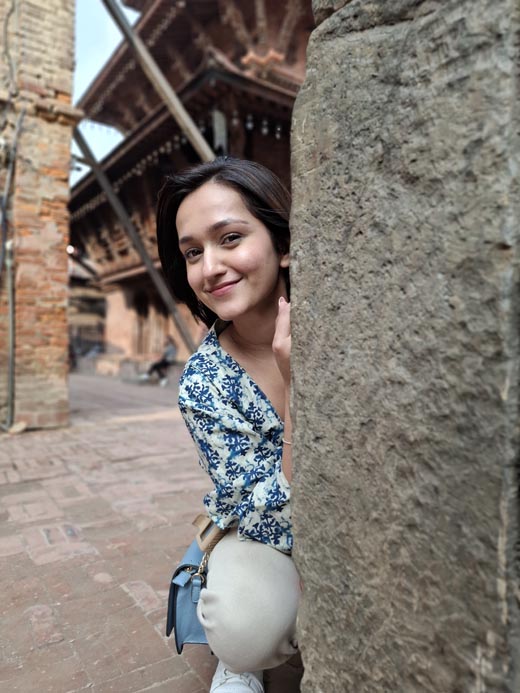







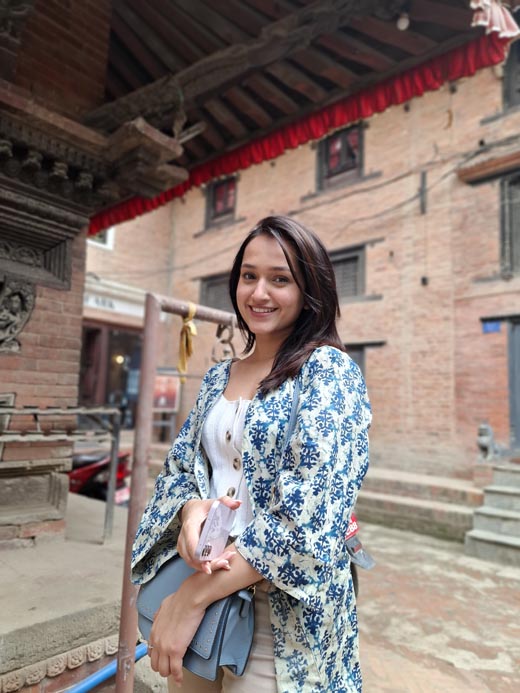













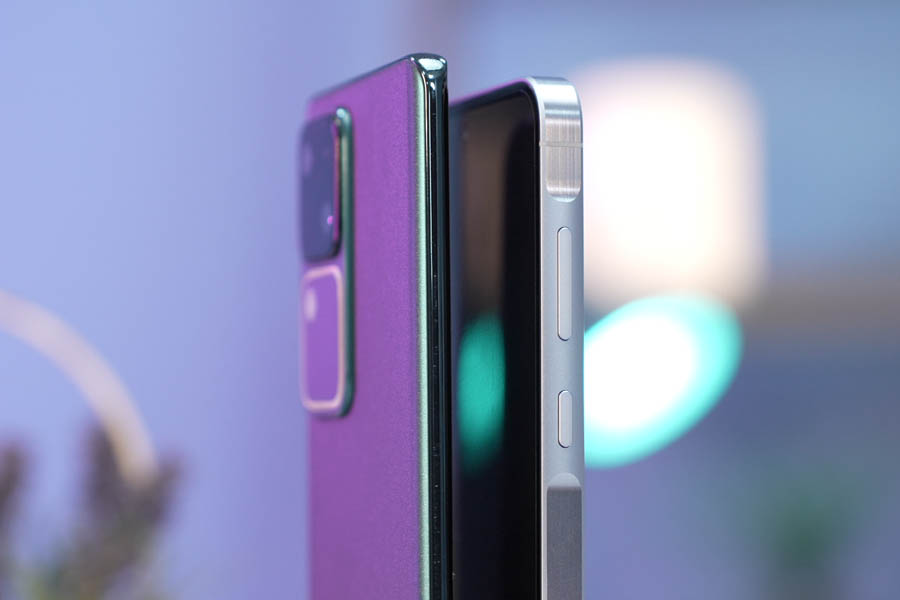





![Best Ultrabooks To Buy in Nepal 2024 [Updated] Best Ultrabook Laptops in Nepal 2023 - June Update](https://cdn.gadgetbytenepal.com/wp-content/uploads/2023/04/Best-Ultrabook-Laptops-in-Nepal-2023-June-Update.jpg)
![Best Gaming Laptops in Nepal 2024 [Updated] Best Gaming Laptops in Nepal 2023 - June Update](https://cdn.gadgetbytenepal.com/wp-content/uploads/2023/04/Best-Gaming-Laptops-in-Nepal-2023-June-Update.jpg)


![Best Mobile Phones Under Rs. 15,000 in Nepal [Updated] Best Phones Under 15000 in Nepal 2024 Budget Smartphones Cheap Affordable](https://cdn.gadgetbytenepal.com/wp-content/uploads/2024/03/Best-Phones-Under-15000-in-Nepal-2024.jpg)
![Best Mobile Phones Under Rs. 20,000 in Nepal [Updated] Best Mobile Phones Under NPR 20000 in Nepal 2023 Updated Samsung Xiaomi Redmi POCO Realme Narzo Benco](https://cdn.gadgetbytenepal.com/wp-content/uploads/2024/01/Best-Phones-Under-20000-in-Nepal-2024.jpg)
![Best Mobile Phones Under Rs. 30,000 in Nepal [Updated]](https://cdn.gadgetbytenepal.com/wp-content/uploads/2023/12/Best-Phones-Under-30000-in-Nepal-2024.jpg)
![Best Mobile Phones Under Rs. 40,000 in Nepal [Updated] Best Phones Under 40000 in Nepal 2024 Smartphones Mobile Midrange](https://cdn.gadgetbytenepal.com/wp-content/uploads/2024/02/Best-Phones-Under-40000-in-Nepal-2024.jpg)
![Best Mobile Phones Under Rs. 50,000 in Nepal [Updated] Best Phones Under 50000 in Nepal 2024 Smartphones Midrange](https://cdn.gadgetbytenepal.com/wp-content/uploads/2024/02/Best-Phones-Under-50000-in-Nepal-2024.jpg)
![Best Flagship Smartphones To Buy In Nepal [Updated] Best Smartphones in Nepal 2024 Flagship Premium Samsung Apple iPhone Xiaomi OnePlus Honor](https://cdn.gadgetbytenepal.com/wp-content/uploads/2023/09/Best-Smartphones-in-Nepal-2024.jpg)